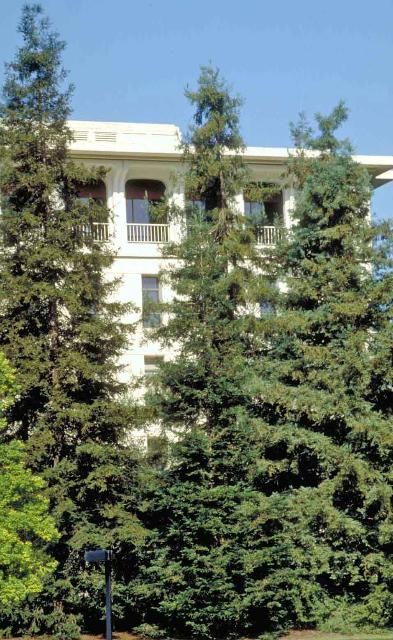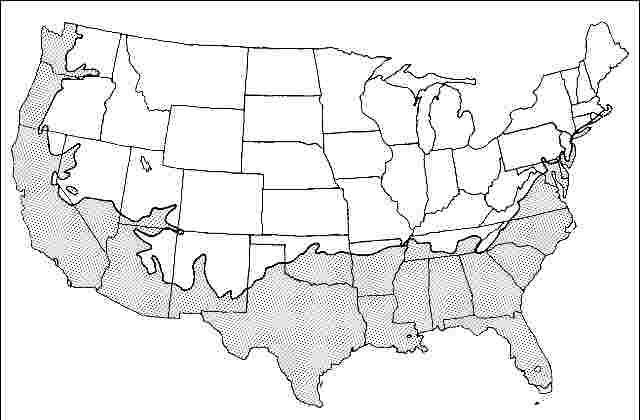Introduction
Sequoia sempervirens, the coast redwoods of California, are the tallest trees in the world. They can vary greatly when grown from seed, but varieties are available now which have been vegetatively propagated and they retain true characteristics. Redwoods grow three to five feet per year and are remarkably pest-free. They live to be many hundreds of years old; some live to several thousand years. Bark is particularly beautiful, turning a bright orange on older trees. It may grow poorly in zones 9 and 10 in Florida.

Credit: Ed Gilman, UF/IFAS
General Information
Scientific name: Sequoia sempervirens
Pronunciation: see-KWOY-uh sem-per-VYE-renz
Common name(s): Coast redwood
Family: Taxodiaceae
USDA hardiness zones: 7A through 10A (Fig. 2)
Origin: native to North America
Invasive potential: little invasive potential
Uses: screen; specimen
Availability: not native to North America

Description
Height: 60 to 120 feet
Spread: 25 to 35 feet
Crown uniformity: symmetrical
Crown shape: pyramidal
Crown density: moderate
Growth rate: moderate
Texture: fine
Foliage
Leaf arrangement: spiral
Leaf type: simple
Leaf margin: entire
Leaf shape: needle-like (filiform)
Leaf venation: parallel, none, or difficult to see
Leaf type and persistence: evergreen, needled evergreen
Leaf blade length: less than 2 inches
Leaf color: green
Fall color: no color change
Fall characteristic: not showy
Flower
Flower color: unknown
Flower characteristics: not showy
Fruit
Fruit shape: cone, round, oval
Fruit length: .5 to 1 inch
Fruit covering: dry or hard
Fruit color: brown
Fruit characteristics: does not attract wildlife; not showy; fruit/leaves not a litter problem
Trunk and Branches
Trunk/bark/branches: branches droop; very showy; typically one trunk; thorns
Pruning requirement: little required
Breakage: resistant
Current year twig color: green, brown
Current year twig thickness: thin, medium
Wood specific gravity: 0.35
Culture
Light requirement: full sun, partial sun, or partial shade
Soil tolerances: clay; sand; loam; acidic; slightly alkaline; occasionally wet; well-drained
Drought tolerance: moderate
Aerosol salt tolerance: unknown
Other
Roots: not a problem
Winter interest: yes
Outstanding tree: no
Ozone sensitivity: tolerant
Verticillium wilt susceptibility: resistant
Pest resistance: resistant to pests/diseases
Use and Management
Redwood maintains a pyramidal form and dark green foliage throughout the year. Planted in a row 15 to 20 feet apart they make a nice screen. In areas outside California and the northwest, it is probably best used occasionally as a novelty specimen.
Redwood is tolerant of flooding, making best growth along stream banks and flood plains. Irrigation helps maintain a vigorous tree in other sites. Allow plenty of soil space for proper development.
Propagation is possible from seed and through vegetative propagation.
Pests
Few insects were noted for Sequoia species.
Diseases
No diseases are of major concern.
Sequoia sempervirens is resistant to oak root fungus.